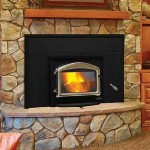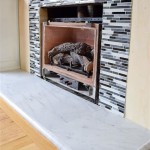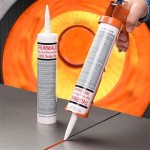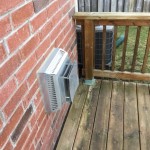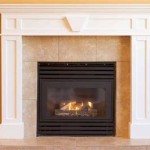Ventless Gas Fireplace Logs Smell: Understanding the Causes and Solutions
Ventless gas fireplaces offer a convenient and efficient alternative to traditional wood-burning fireplaces, providing supplemental heat and ambiance without the need for a chimney. However, a common concern among users is the occasional unpleasant odor associated with these units. Understanding the potential causes of this smell is crucial for maintaining a safe and enjoyable experience. This article will delve into the various factors contributing to ventless gas fireplace odors and offer practical solutions for mitigation.
Unlike vented fireplaces, ventless models burn fuel more completely, aiming for nearly 100% combustion. The design intends to minimize the production of harmful byproducts like carbon monoxide. However, even with advanced technology, complete combustion is difficult to achieve consistently. This imperfect combustion, coupled with other environmental factors, can lead to noticeable smells.
Incomplete Combustion as a Primary Culprit
The primary reason for odors emanating from ventless gas fireplace logs is often incomplete combustion. When the gas burns incompletely, it produces byproducts such as carbon monoxide, aldehydes, and other volatile organic compounds (VOCs). These compounds are responsible for the characteristic "gas smell" or a more pungent, acrid odor that users may detect.
The quality of the gas itself plays a significant role. Natural gas, while generally clean-burning, can contain impurities, particularly sulfur compounds. Propane, another common fuel source for ventless fireplaces, can also contribute to odors if it's not properly refined. These impurities, even in small concentrations, can produce noticeable smells when burned.
Furthermore, the air-to-fuel ratio is critical for optimal combustion. If the mixture is too rich (too much fuel, not enough air) or too lean (too much air, not enough fuel), the combustion process will be less efficient, leading to increased byproduct formation and, consequently, stronger odors. Proper ventilation, even with a ventless system, is therefore essential to provide adequate oxygen for complete combustion.
The design and maintenance of the fireplace logs themselves also influence combustion quality. Over time, dust, debris, and even residues from cleaning products can accumulate on the logs and burner assembly. These contaminants can interfere with the combustion process, leading to incomplete burning and the generation of odors. Regularly cleaning the logs and burner with a brush and vacuum can significantly improve combustion efficiency.
Altitude can also affect combustion. At higher altitudes, the air is thinner, which reduces the amount of oxygen available for combustion. This can exacerbate incomplete combustion and increase the likelihood of unpleasant smells. Adjusting the air-to-fuel ratio may be necessary to compensate for the reduced oxygen levels at higher altitudes.
Environmental Factors and Air Quality
Beyond the combustion process itself, the surrounding environment significantly impacts the perceived odor from a ventless gas fireplace. Existing air quality within the home, the presence of other odor-producing substances, and even humidity levels can all contribute to the overall smell.
Homes with poor ventilation or high levels of indoor air pollution may already have a baseline level of odor. The addition of a slight smell from the gas fireplace can then become more noticeable and unpleasant. Common indoor pollutants include volatile organic compounds (VOCs) from cleaning products, paints, carpets, and furniture. These VOCs can interact with the byproducts of combustion, creating new and potentially more irritating odors.
Humidity levels also play a role. High humidity can trap odors and make them more persistent. Conversely, very dry air can exacerbate respiratory irritation from even minor amounts of combustion byproducts. Maintaining a moderate humidity level can help minimize odor perception and improve overall air quality.
The size of the room in relation to the fireplace's BTU output is another critical consideration. A fireplace that is too large for the space can lead to increased levels of combustion byproducts and a greater likelihood of noticeable odors. Choosing a fireplace appropriate for the room's size is essential for both safety and comfort.
Finally, the presence of certain materials or chemicals in the surrounding area can react with combustion byproducts and create new odors. For example, if the fireplace is located near new carpeting or freshly painted walls, the outgassing from these materials can interact with the fireplace's emissions and produce an unexpected or unpleasant smell.
Maintenance, Installation, and Safety Considerations
Proper installation and routine maintenance are critical for ensuring the safe and efficient operation of a ventless gas fireplace and for minimizing the risk of unpleasant odors. Neglecting these aspects can lead to incomplete combustion, increased byproduct formation, and potential safety hazards.
Professional installation is highly recommended, particularly for gas appliances. A qualified technician can ensure that the fireplace is properly connected to the gas supply, that the air-to-fuel ratio is correctly adjusted, and that all safety features are functioning as intended. Improper installation can lead to gas leaks, incomplete combustion, and a significantly increased risk of carbon monoxide poisoning.
Regular maintenance should include cleaning the logs and burner assembly at least once a year, or more frequently if the fireplace is used extensively. Use a soft brush or vacuum to remove dust, debris, and any accumulated residues. Avoid using harsh cleaning chemicals, as these can leave behind residues that interfere with combustion and produce odors.
Inspect the gas line connections regularly for leaks. A gas leak, even a small one, can be dangerous and can contribute to unpleasant odors. Use a soapy water solution to check for leaks around the connections. If you suspect a gas leak, immediately shut off the gas supply and contact a qualified technician.
Ensure that the room has adequate ventilation, even though the fireplace is ventless. Opening a window slightly can help to provide fresh air and reduce the concentration of combustion byproducts. Consider using an air purifier with a carbon filter to remove odors and other pollutants from the air.
Finally, install and maintain carbon monoxide detectors in the home. These detectors will provide an early warning of any carbon monoxide buildup, which is a potentially fatal byproduct of incomplete combustion. Test the detectors regularly and replace them according to the manufacturer's instructions.
Addressing the issue of ventless gas fireplace logs smell requires a multifaceted approach, considering factors ranging from the quality of the gas and the combustion process to the surrounding environment and the maintenance practices employed. By understanding these key elements and implementing appropriate solutions, users can mitigate unpleasant odors and enjoy the benefits of their ventless gas fireplace safely and comfortably.

Vent Free Fireplace Odor

Vent Free Gas Logs What S That Smell

Vent Free Fireplace Odor

Vented Vs Ventless Gas Logs What S The Difference

Napoleon Gvfl30 Ventless Gas Log Set 30 Inch

ᑕ❶ᑐ Ventless Gas Logs Are They Safe

How To Light The Pilot On A Vent Free Gas Log Fireplace And Other Helpful Tips

What Is A Ventless Fireplace Doctor Flue Inc

Gas Logs Vented Vs Ventless Royal Oak Mi Fireside

Why Do My Gas Logs Smell Foster Fuels
Related Posts

